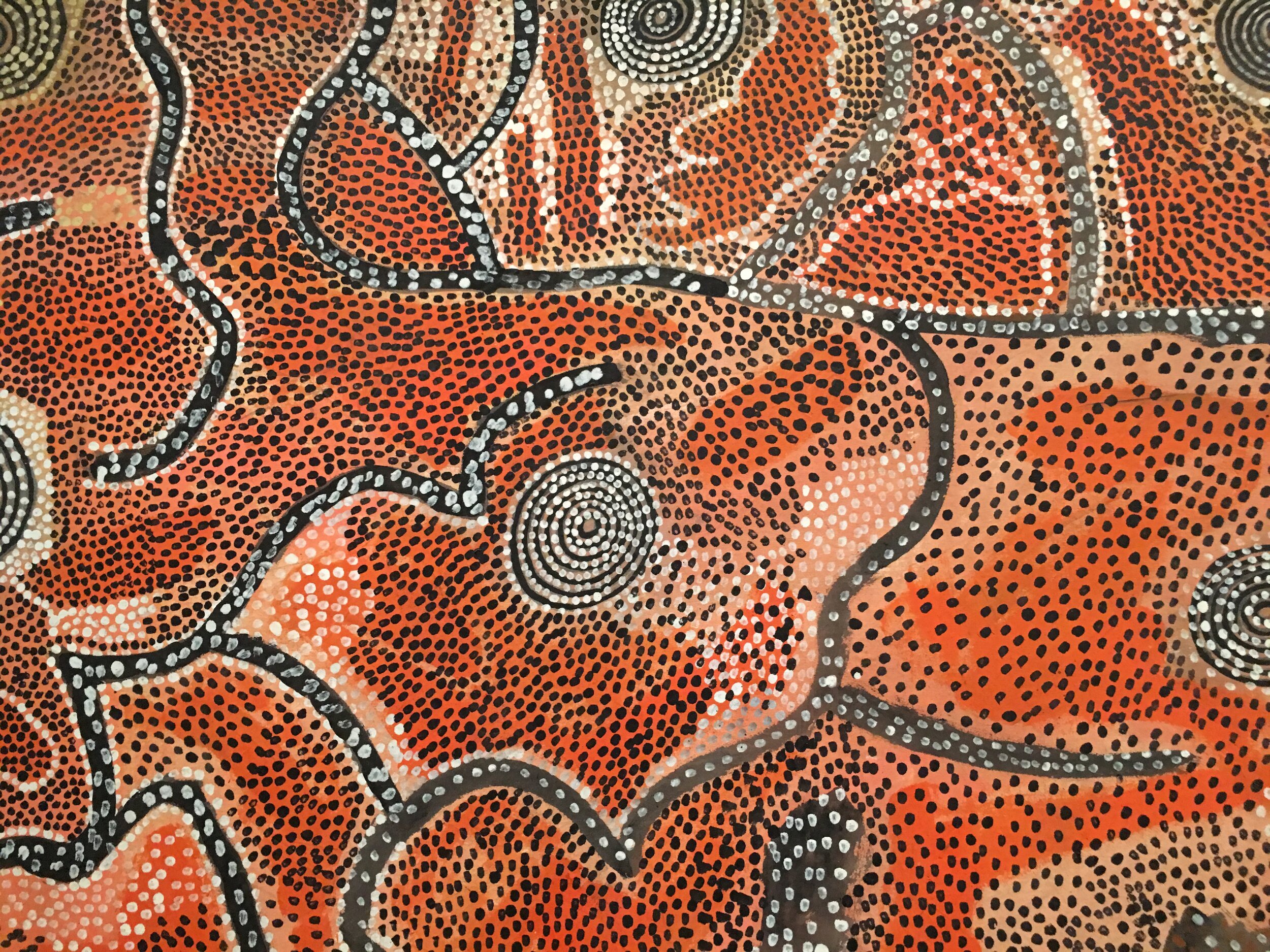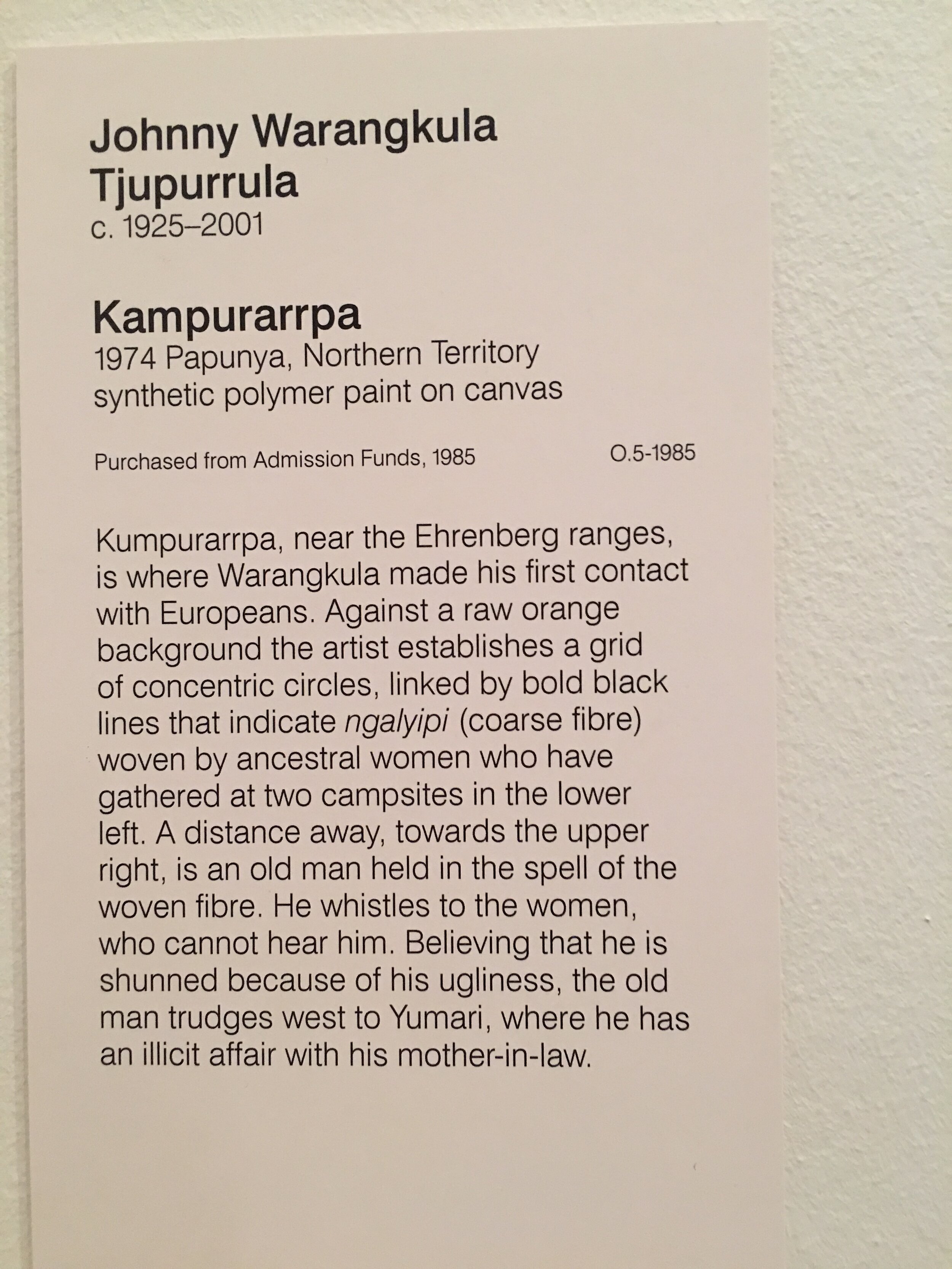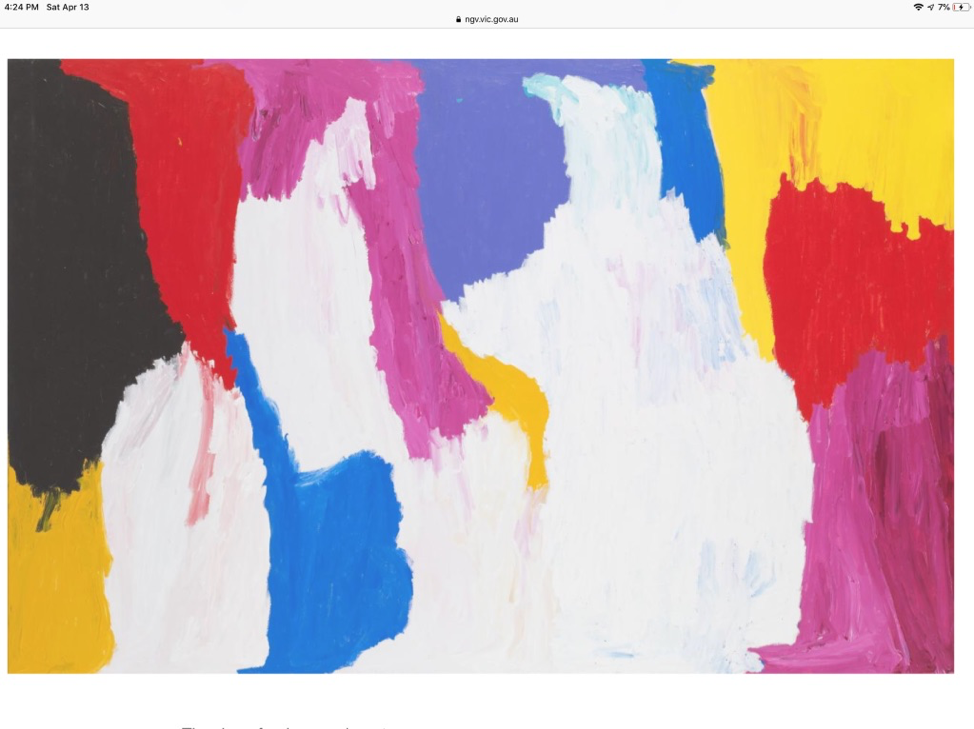Address
Federation Square, Finders St. & Russel St.
Melbourne VIC 3006
Australia
Telephone
Website
WHAT I LIKED: easy access and airy galleries
WHAT I MISSED: I’d love to find more audio files for the NGV Australia on the app
To read a summary of the blog, please click the IN SHORT button.
In a time when traveling was a common thing to do, I had the opportunity to travel to Melbourne, Australia. The long flight was worth it – the trip was full of exciting adventures and experiences, unforgettable memories, breathtaking nature, and of course, art. In particular, I gained a new understanding of the traditions, myths, and storytelling that inform Indigenous art.
Eugene von Guérard, Mount Kosciusko, seen from the Victorian border (Mount Hope Ranges), 1866 Melbourne, oil on canvas
Description: a landscape with a dense forest in the foreground in dark greens, framed by high trees to the left and eucalyptus trees to the right, offers a view of a vast mountain range
About the Museum
Fortunately for me, the museum was a short walking distance from my hotel, and I enjoyed my walk there. It is always exciting and sometimes a bit stressful for a VIP (visually impaired person) to explore a new city on their own. Melbourne was a good experience for me, as the sidewalks were wide, the layout was easy to comprehend, street names were attached head high and vertically on the corner of crossings with acoustic signals, but – yes! – they are driving on “the wrong side” Down Under!
Street sign with easy to read street name and acoustic signal
The National Gallery of Victoria is comprised of two separate museums in different locations only a short walk apart: the NGV International and the NGV Australia. I focused on the NGV Australia at the Ian Potter Centre at Federation Square. This landmark building by Australian architects Peter Davidson and Donald Bates is home to the NGV Australia galleries with an excellent collection of Australian indigenous and non-indigenous art from the Colonial period to the present day.
With more Australian art on permanent display than any other gallery in the world, as well as special exhibitions and programs, the center offers a high recreational value with cafes, a restaurant, new perspectives of the city through its glass matrix, and great outdoor spaces to enjoy the world of art in the new cultural heart of Melbourne.
Johnny Warangkula, Kampurarrpa, 1974, Papunya, Northern Territory, landscape format, synthetic polymer paint on canvas
Top: Installation view, Kampurarrpa
Bottom left: A detail of the dot painting, which depicts a story with white and black dots and black lines on an orange/red/ochre background.
Bottom right, text from label: “Against a raw orange background the artist establishes a grid of concentric circles, linked by bold lines that indicate ngalyipi (coarse fibre) woven by ancestral women who have gathered at two campsites in the lower left. A distance away, towards the upper right, is an old man held in the spell of the woven fibre. He whistles to the women, who cannot hear him. Believing that he is shunned because of his ugliness, the old man trudges west to Yumari, where he has an illicit affair with his mother-in-law.”
I was looking forward to learning more about the history of Indigenous art and contacted the NGV Australia several weeks prior to my visit. The access department helped me to make my visit a special one.
I had a private tour with a guide trained in verbal description. She took me through the art history of Australia, from early 19th century European immigrants, and introduced me to the compelling history of Indigenous art, which is more than 5000 years old. Traditionally, Indigenous paintings were drawn on rock walls and ceremonial articles, as body paint, and most significantly, in dirt or sand together with songs or stories. Artwork on canvas and board commenced merely 50 years ago, when in 1971, a school teacher named Geoffrey Bardon noticed that Indigenous men drew symbols in the sand as they told stories. He encouraged them to paint the stories onto canvas and board, initiating contemporary Indigenous art.
Indigenous artists need permission to paint particular stories. They inherit the rights to these stories which are passed down through generations within certain skin groups. An Indigenous artist cannot paint a story that does not belong to them through family.
Left: escalators with a tactile pad in front
Right: a look into the gallery space
Entrance and Galleries
The building is easily accessible with escalators, elevators, and stairs to access the upper floors. As admission is free, there is no ticket counter. The airy layout of the galleries offers enough space to walk around with ease, even with a cane. Most of the galleries offer good light with no glare, but special exhibitions might offer a different lighting scheme.
Alec Mingelmanganu, Wanjina, 1980, Western Australia, earth pigments and natural binder on canvas. Listen to an audio description on the online audio guide.
Labels, Audio Guide, and App
Visiting the galleries on my own was an enjoyable experience. The labels are well designed, they have a clear font, and many offer the story of the painting as well, which I liked very much.
In preparation for your visit, you might like to download large print labels in advance. There is an app with an audio guide mostly of the NGV International and only a few of the NGV Australia. On the website you can find audio descriptions of the highlights of the collection.
I certainly recommend contacting accessibility a few weeks before you visit to ask for special programs and to arrange a private verbal description tour. This was such a wonderful experience for me.
Last, But Not Least
Delving into the spiritual world of dreams and storytelling in Indigenous art was a very intense process for me. It made me appreciate our following trip to Uluru (Ayers Rock), the sacred rock formation it the heart of Australia, even more.
Take your time to visit this inspiring place and relax in the shop and café afterwards!
Don’t miss the NGV International, only a few blocks away, which has an interesting permanent collection and changing special exhibitions.
More Works from the Collection
Frederick McCubbin, The Pioneer, 1904 Mount Macedon, Victoria, oil on canvas
Label text: “The Pioneer reflects Australia’s self-conscious nationalism in the years immediately following Federation and captures the progress of toil across time. The first panel shows a pioneering couple in their new bush environment and the second shows them several years later: the woman holds a baby, land has been cleared and a small house built. In the final panel a bushman discovers a grave and a city has emerged. It is uncertain who has died and whether the male figure is the pioneer, his son or a stranger. By presenting his painting in the triptych format often used in traditional religious art, McCubbin elevates the status of the pioneer tn Australian art history.”
Tim Leaura Tjapaltjarri, Cifford Possum Tjapaltjarri, Spirit Dreaming Through Napperby Country, 1980 Napperby, Northern Territory, synthetic polymer paint on canvas
Label text: “This cartographic work, both cultural self-portrait and history painting, is visionary in dimensions and mapping of different Dreamings. Its monumental size physically draws the viewer into its complexand layered surface, and the horizontal march of the opposum’s journey anchors the gaze. Uniquely, Tim Leura incorporated miniature iterations of three of this earlier paintings in this composition, thereby re-establishing himself within the history of the Papunya Tula movement. The skeletal spirit figure perhaps represents Tim Leura’s father in transition form the corporeal existence into the Dreaming, invoking Anmatyerr belief that time is indivisible.
Mirdidingkingathi Juwarnda Sally Gabori, Dibirdibi Country, 2008 Mornington Island, Queensland, synthetic polymer paint on canvas
Label text: “Sally Gaboriy reperesent Dibirdibi, the story place of Dibirdibi, the Rock Cod ancestor who thrashed about, cutting out channels with his ventral fins and carving up the South Wellesby Islands. Dibirdibi’s creative journey ended on Sweers Island, where he was caught and eaten. His liver was discarded, transforming into a freshwater spring that still provides a reliable water source. Dibirdibi is also the name of the artist’s husband, Pat Gabori, the inhertor of the song, story and places associated with the Rock Cod ancestor. Its topography is distinguished by large salt pans, iron stone ridges and long-grass plains.”
Follow me on Facebook, Instagram, and Twitter, and please email me with any questions, suggestions, or feedback!
Sunset at Uluru/Ayers Rock, the sacred rock formation in the heart of Australia.
















